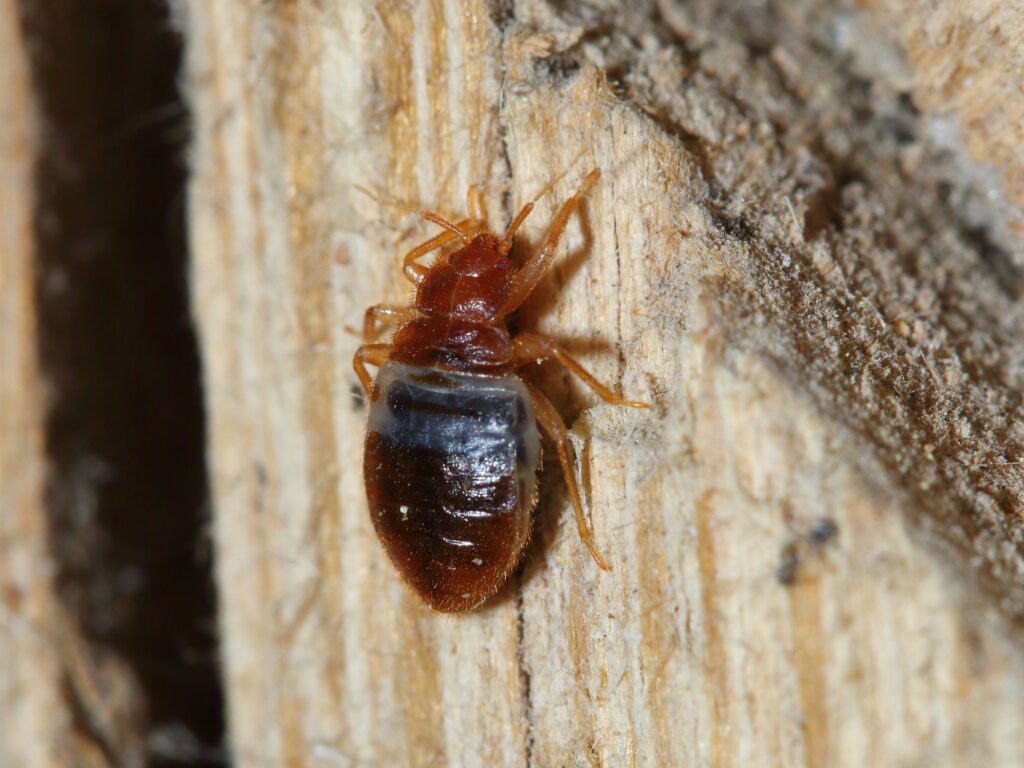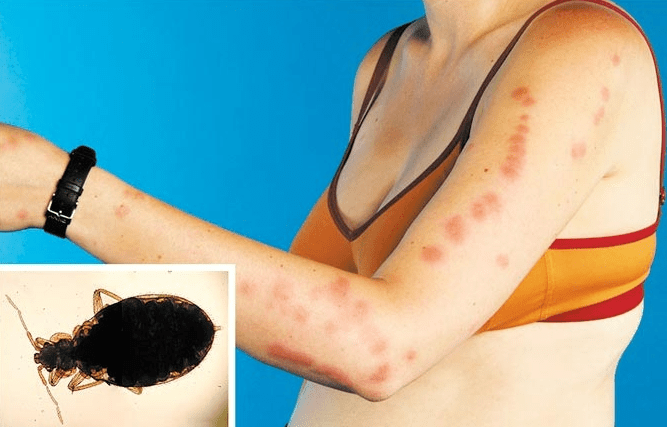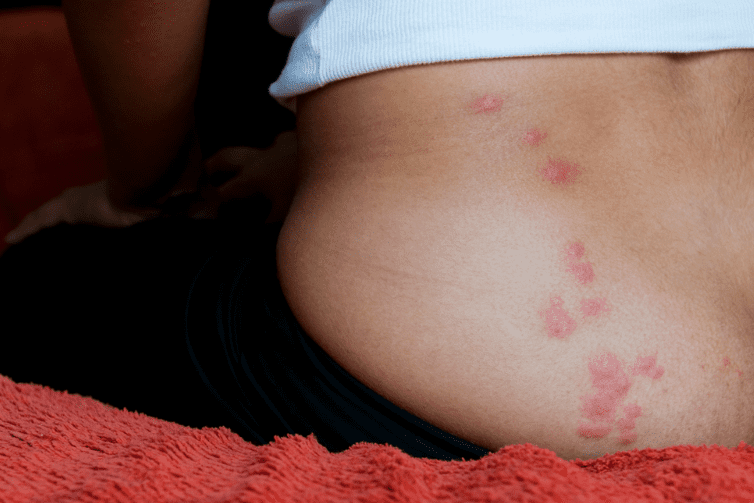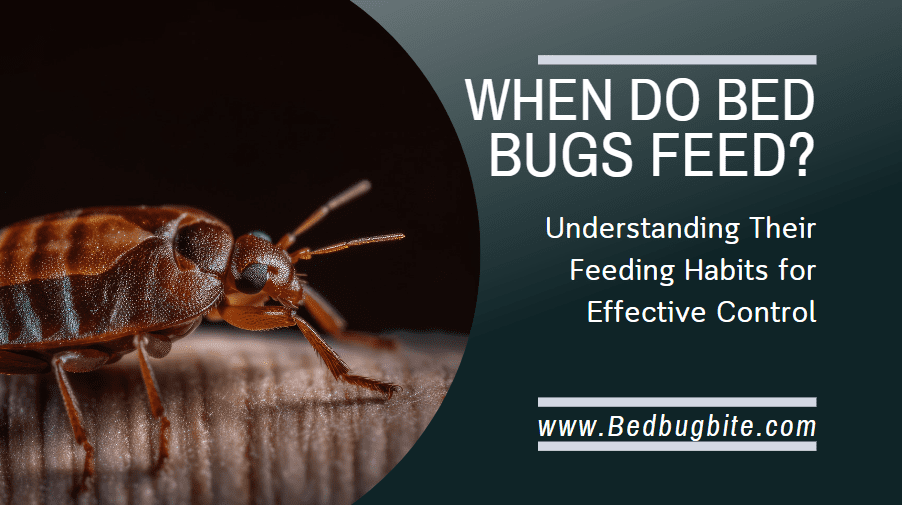Understanding Their Feeding Habits for Effective Control
Welcome to our comprehensive guide on understanding the feeding habits of bed bugs, a critical step in managing and preventing infestations. Bed bugs, notorious for their stealthy and irritating bites, have perplexed homeowners and pest control experts alike. By delving into the nocturnal world of these elusive pests, we aim to shed light on their feeding patterns, which is pivotal in devising effective control strategies. For more useful Bed Bug Article Check Click Here!
Bed bugs, primarily active at night, have a notorious reputation for being elusive. This nocturnal nature plays a significant role in their survival and makes them particularly challenging to detect and eliminate. Understanding when bed bugs feed is not just a matter of curiosity but a strategic element in combating their presence. In this article, we will explore the intricacies of their feeding habits, debunk common misconceptions, and provide practical advice to help you keep your home bed bug-free.

Bed bugs prefer to feed on human blood, exhibiting a remarkable ability to adapt to the sleeping patterns of their human hosts. Their peak feeding hours typically align with the late-night hours when people are in deep sleep. Thus reducing the likelihood of detection. However, it’s crucial to note that bed bugs can adjust their feeding schedule under certain conditions. Such as an absence of hosts during their usual feeding times. This adaptability underscores the importance of a comprehensive approach to bed bug control that goes beyond merely targeting their active hours.
So, let’s Get into it.
In the subsequent sections, we will delve deeper into the frequency of their feedings, signs to watch out for, and effective prevention and treatment strategies. By understanding the “when” of bed bug feeding, we empower ourselves with knowledge that is essential for effective pest control.
For further reading and a deeper understanding of bed bug behavior, the Environmental Protection Agency (EPA) provides a wealth of information on bed bug biology and behavior. Visit their website here for more insights.
By arming ourselves with accurate information, we can approach bed bug infestations with confidence and effectiveness. Stay tuned as we explore more on these nocturnal feeders in the following sections.
In our exploration of bed bug habits, a pivotal aspect to consider is their nocturnal nature. Understanding the specific hours when bed bugs are most likely to feed can significantly enhance our strategies for detection and eradication. Let’s delve into the peak feeding hours of these elusive pests and unravel the factors that influence their nocturnal activities.
Peak Feeding Hours: When Do Bed Bugs Emerge?
Bed bugs are most active during the night, specifically in the hours just before dawn. This timing is closely tied to their survival instinct, as it allows them to feed on unsuspecting hosts. Research suggests that bed bugs prefer to come out between 2 a.m. and 5 a.m. Aligning their feeding time with the deepest phase of human sleep. This behavior minimizes disturbance and maximizes their feeding success.
Influencing Factors: What Dictates Their Nocturnal Behavior?
Several factors play a role in determining the specific feeding times of bed bugs. Room temperature, availability of hosts, and even the presence of light can influence their activity patterns. For instance, bed bugs may adjust their feeding habits in cooler temperatures or if a host’s sleeping pattern changes. This adaptability makes them formidable pests and underscores the need for flexible and comprehensive control measures.
The Role of Environment in Bed Bug Activity
The environment in which bed bugs reside can also affect their feeding schedule. In cluttered or heavily infested areas, bed bugs might feed more sporadically, as competition for food increases. Conversely, in controlled environments like well-maintained homes or hotels, their feeding patterns may become more predictable. Understanding the impact of environment on bed bug behavior is crucial for effective monitoring and control.
Recognizing the patterns and factors influencing bed bug activity is essential for effective pest control. The Centers for Disease Control and Prevention (CDC) offers additional insights into the behavior of these nocturnal pests, providing valuable information for homeowners and pest control professionals alike.
By grasping the nuances of bed bug nocturnal habits, we can tailor our prevention and treatment strategies more effectively, staying one step ahead of these elusive night feeders. In the next sections, we will explore their feeding frequency and the signs indicating their presence, equipping you with the knowledge to tackle bed bug challenges head-on.
Delving deeper into the lifecycle of bed bugs, a critical aspect to consider is their feeding frequency. Understanding how often bed bugs feed is key to recognizing infestation levels and implementing effective control measures. This section explores the regularity of bed bug meals and how it varies across different stages of their life.
Frequency of Bed Bug Feedings: How Often Do They Need a Blood Meal?
Bed bugs feed on blood as their sole source of nutrition. Adult bed bugs typically feed every 5 to 7 days, but this can vary based on several factors, including temperature and availability of hosts. In optimal conditions, they may feed more frequently. It’s important to note that while bed bugs can survive for months without feeding, regular access to blood meals is crucial for their reproduction and development.
Feeding Patterns Across Life Stages
The feeding frequency of bed bugs also changes as they progress through their lifecycle. Nymphs, or juvenile bed bugs, require a blood meal to molt and advance to the next developmental stage. This means they feed more frequently than adults, often seeking a meal every 3 to 4 days. Understanding these developmental needs is vital for targeting infestations effectively.
Impact of Feeding Frequency on Bed Bug Lifecycle
The frequency of feeding directly impacts the reproduction and population growth of bed bugs. Females need regular blood meals to produce eggs, and a higher feeding frequency can lead to rapid increases in bed bug populations. This correlation emphasizes the importance of early detection and intervention in managing bed bug infestations.
For a more detailed look at bed bug biology and feeding patterns, the National Pest Management Association provides extensive resources and research findings.
By understanding the feeding frequency of bed bugs, we equip ourselves with crucial knowledge for monitoring and controlling these pests effectively. In our next sections, we will discuss how to recognize signs of bed bug feedings and how environmental changes can influence their behavior, further empowering you in your fight against these resilient pests.
Recognizing the signs of bed bug feedings is a crucial step in early detection and effective management of these pests. Bed bugs leave distinct indicators of their presence, which, if identified promptly, can greatly aid in controlling their spread. This section focuses on key signs of bed bug activity, helping you identify and respond to infestations efficiently.
Identifying Common Signs of Bed Bug Feedings
The most noticeable sign of bed bug activity is the appearance of bites on the skin. These bites often manifest as small, red, itchy welts, typically in a line or cluster. It’s important to note, however, that reactions to bed bug bites can vary significantly among individuals. Some may experience pronounced itching and swelling, while others might not notice any symptoms at all. Additionally, bed bug fecal spots, which appear as small, dark, rust-colored stains, can often be found on bedding, mattresses, and nearby furniture.
Tips for Spotting Bed Bug Indicators in Your Home
Regular inspection of sleeping areas is key in spotting bed bug activity early. Check the seams of mattresses, bed frames, and box springs for signs of bed bugs. Look for live insects, shed skins, and fecal spots. Using a flashlight and magnifying glass can aid in identifying these small and often well-hidden pests.
Photographs and Descriptions of Bed Bug Bites

Photographic evidence can be a helpful tool in recognizing bed bug bites. Consulting images of bed bug bites can assist in distinguishing them from other insect bites or skin irritations. It’s also useful to document any bites you or your family members receive, as this can help pest control professionals in assessing the severity of an infestation.
For comprehensive information on identifying bed bug infestations, the University of Kentucky’s College of Agriculture, Food, and Environment offers an in-depth guide on bed bug identification and control.

By being vigilant and knowing what signs to look for, you can detect bed bug infestations early and take prompt action. In the following sections, we will explore the circumstances leading to daytime feeding in bed bugs and strategic timing for bed bug control, further enhancing your ability to tackle these challenging pests.
While bed bugs are predominantly nocturnal feeders, there are exceptions to this rule. Understanding the circumstances that lead to daytime feeding in bed bugs is essential for comprehensive pest management. This section examines the factors that may cause bed bugs to alter their typical feeding behavior and feed during the day.
Daytime Feeding: Understanding the Exceptions
Contrary to popular belief, bed bugs are not strictly nocturnal. In situations where nighttime feeding is not possible, such as in heavily infested areas or when their human hosts work night shifts, bed bugs may adapt and seek meals during the day. This adaptability underscores their resilience and highlights the importance of a versatile approach to bed bug control.
Circumstances Leading to Daytime Feeding
Several factors can prompt bed bugs to feed during daylight hours. High infestation levels, where competition for nighttime feeding is intense, can push some bed bugs to seek alternative feeding times. Additionally, if the sleeping patterns of the host change, bed bugs can adjust their feeding schedule accordingly. This flexibility in feeding behavior can make detection and control more challenging.
Environmental Changes Affecting Bed Bug Behavior
Environmental changes, such as room temperature or availability of hiding spots, can also influence bed bug feeding habits. For instance, in colder environments, bed bugs might seek warmth from human hosts during the day. Similarly, a lack of suitable hiding places may force bed bugs to venture out for food more brazenly, even in well-lit conditions.
To gain a deeper understanding of the adaptability of bed bugs and their behavior under different circumstances, the Integrated Pest Management (IPM) Guidelines by the University of California provide valuable insights.
Recognizing that bed bugs can and will feed during the day under certain conditions is crucial for effective pest management. As we continue our exploration, we will delve into strategic timing for bed bug control, aligning treatment strategies with their feeding habits to maximize effectiveness. Stay tuned for more actionable insights in our upcoming sections.
Successfully combating bed bugs requires a strategy that aligns with their feeding habits. By understanding when bed bugs are most active, we can time our control measures for maximum effectiveness. This section provides insights into aligning bed bug treatment strategies with their feeding times, offering practical advice on the most effective products and methods for controlling these persistent pests.
Strategic Timing in Bed Bug Control
Timing is crucial in bed bug eradication efforts. Applying treatments during periods when bed bugs are most active, typically at night, can increase the chances of directly targeting the pests. This approach can be particularly effective when using chemical treatments or deploying traps, as bed bugs are more likely to come into contact with these control measures during their peak activity hours.
Recommended Products and Methods for Effective Control
A variety of products and methods are available for bed bug control, each with its own advantages. Chemical treatments, such as insecticides, can be effective when applied correctly. Non-chemical methods like heat treatments, which involve raising the temperature in an infested area to levels lethal to bed bugs, are also highly effective. Additionally, using mattress encasements and interceptor traps can prevent bed bugs from accessing their feeding sites and monitor their presence.
Aligning Treatment with Bed Bug Behavior
Understanding bed bug behavior and feeding patterns can greatly enhance the effectiveness of treatment strategies. For instance, placing interceptor traps around bed legs can capture bed bugs as they attempt to climb up to feed at night. Similarly, scheduling professional heat treatments during times when bed bugs are likely to be hidden in their daytime resting spots can ensure maximum impact.
For more detailed guidelines on bed bug control strategies and their timing, the National Pest Management Association offers a wealth of resources and professional advice.
By strategically timing bed bug control measures and choosing the right products and methods, you can significantly improve your chances of successfully eliminating these pests. In the next section, we will explore preventive measures to minimize bed bug feeding opportunities, further strengthening your defense against these nocturnal invaders.
As we conclude our comprehensive exploration of bed bug feeding habits, it’s clear that understanding these elusive pests is key to effective control and prevention. We’ve delved into the intricacies of their nocturnal feeding patterns, the frequency and signs of their feedings, the exceptional circumstances leading to daytime feeding, strategic timing for control measures, and essential preventive steps. This knowledge empowers homeowners and pest control professionals alike to tackle bed bug challenges with confidence and effectiveness.
Recap of Key Insights on Bed Bug Feeding Habits
We’ve learned that bed bugs are primarily nocturnal, feeding predominantly at night, particularly just before dawn. Their feeding frequency varies across life stages, with nymphs feeding more often than adults. Recognizing the signs of bed bug bites and infestations is crucial for early detection and control. We also discovered that bed bugs can adapt their feeding habits to daytime under certain conditions, making vigilance a constant necessity.
Empowering Yourself Against Bed Bug Infestations
Armed with this information, you are now better equipped to identify, prevent, and control bed bug infestations. Remember, the key to managing bed bugs is not just reacting to their presence but proactively creating an environment where they are less likely to thrive and feed. Regular inspections, cleanliness, and awareness during travel are all critical components of a comprehensive bed bug management plan.
By staying informed and proactive, you can significantly reduce the risk of bed bug infestations and ensure a more peaceful, bed bug-free environment. Remember, knowledge is your best defense against these persistent and resilient pests.




